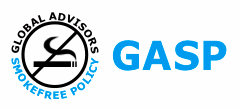Federal Trade Commission report shows tobacco industry spent $9.6 billion per year to market/advertise cigarettes (FTC press release)
Posted on
- In 2012, the largest cigarette companies collectively spent $9.6 billion to market and advertise cigarettes in the USA (up from $8.37 billion in 2011), and spent $436 million to market and advertise smokeless tobacco (down from $452 million in 2011).
- In 2012, total sales of smokeless tobacco in the USA was $3.08 billion (125.5 million pounds of smokeless tobacco), up from $2.94 billion in 2011 (122.7 million pounds), and the total number of cigarettes sold to U.S. wholesalers and retailers declined from 273.6 billion cigarettes to 267.7 billion cigarettes.
- Yet, the tobacco manufacturers only spent $2.2 million collectively in 2012 on advertising directed to youth and parents to reduce youth smoking (vs. $58 million in 2006).
In addition, the industry spent $335.1 million in 2012 (down from $357.0 million in 2011) on promotional allowances paid to cigarette retailers to facilitate the sale or placement of cigarettes (e.g., payments for stocking, shelving, displaying, and merchandising brands, volume rebates, and incentive payments); and $391.1 million (down from $401.0 million) on promotional allowances paid to cigarette wholesalers (e.g., payments for volume rebates, incentive payments, value-added services, and promotional executions). When these three promotional allowance categories are combined, they total $8.528 billion, and account for 93.0 percent of all 2012 spending; in 2011, they totaled $7.755 billion, 92.7 percent of all spending.
Since 2001, the Commission has required the manufacturers to report expenditures on advertisements directed to youth or their parents that are intended to reduce youth smoking. The companies reported spending $2.2 million in 2012.10 Over the previous six years, they had reported expenditures of $57.7 million (2006), $20.7 million (2007), $11.5 million (2008), $8.1 million (2009), and $4.4 million (2010), and $2.9 million (2011). These figures do not include contributions to third parties that engage in such programs.
